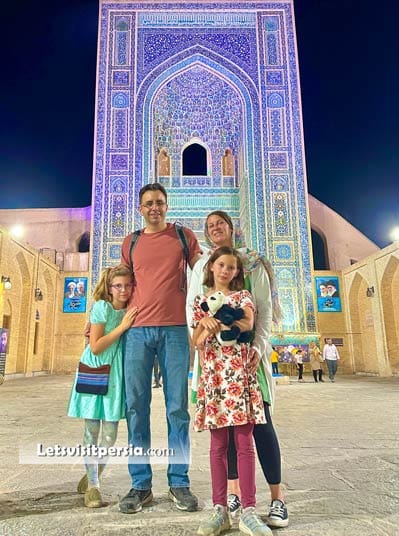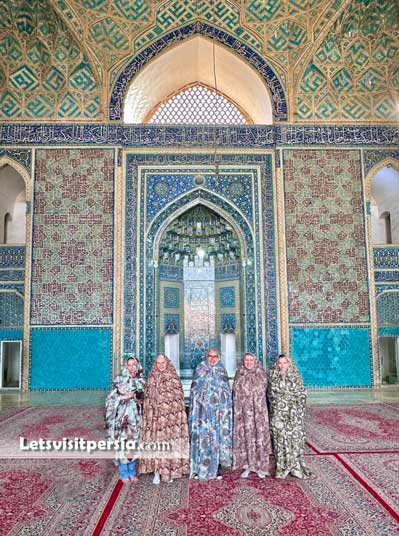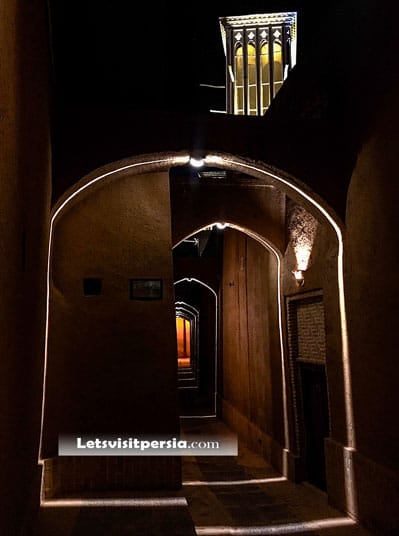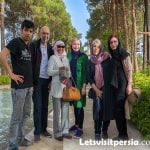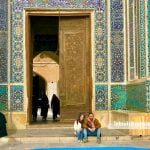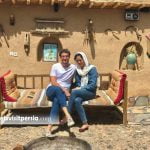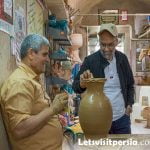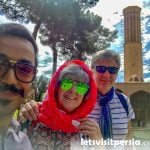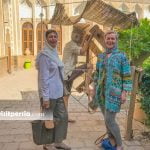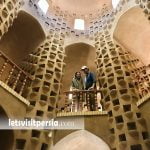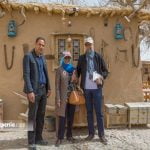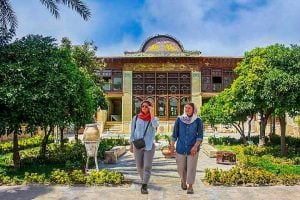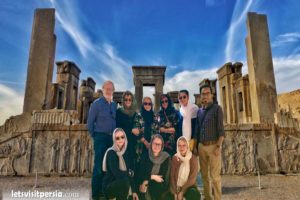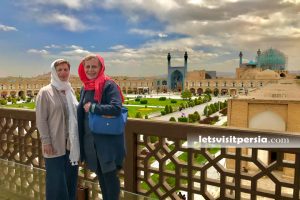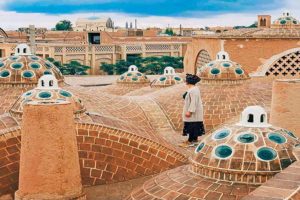Tour Type
Cultural
Historical
Yazd City Tour
Tour Duration: 1 Day
Customizable: Yes
One Day Tour
Based on Yazd province and Its beautiful cities
Quick Access
Yazd City Tour Package
What you can expect on the Yazd city tour :
As you walk along Yazd’s narrow alleys and lofty windbreaks, you feel like you have traveled through time.
The call to prayer from the Grand Mosque, the scent of freshly baked bread wafting from traditional bakeries, and the sun’s rays on the adobe walls all transport you to another world.
The historical city of Yazd is the largest mud-brick and the first city that is registered as a UNESCO heritage in Iran.
Yazd city tour is designed to cover not only the highlight attractions of the city but also the less visited places which offer a unique experience for any traveler.
Like Shiraz and Isfahan, Yazd is also a must-visit city of Iran with a rich cultural and amazing Historical background, Moreover, this ancient city is home to several beautiful deserts that attract many locals and tourists.
Houses, gardens, and buildings are built in magnificent harmony with this deserted city. In addition, The culture, architecture, and even lifestyle of this area are influenced by the dry nature of the desert.
You can experience a great journey with the Letsvisitpersia team. Their guide has enough knowledge about Iran and its history. Yazd is my favorite city in Iran. The people are amazingly kind and hospitable.

We were really satisfied with Letsvisitpersia services, especially Vahid who was so friendly, on time, and always available. We had a wonderful time in Yazd.

How to get to Yazd
Reaching Yazd from major cities like Isfahan, Shiraz, or Tehran is not only convenient but also offers a chance to enjoy some of Iran’s most picturesque landscapes along the way.
Whether you choose to travel by road, rail, or air, the journey to this historic desert city is smooth and filled with scenic charm.
From Isfahan, it takes 4 hours by bus or car through desert landscapes in central Iran.
From Shiraz to Yazd, it takes about 6 hours by car or bus with views of remote villages and mountain passes.
From Tehran, there is a 1-hour flight, a comfortable overnight train, or an 8-hour drive.
Every path has its own insight into Iran’s varied landscape.
Yazd is a city that appears to have frozen in time. The adobe lanes, high windbreaks, and warm individuals were a memorable experience for me.
Yazd City Tour Highlights
Dowlat Abad Garden: A garden featuring a 33.8-meter Badgir (cooling system), a unique specimen of Iranian architecture in the desert.
Tower of Silence is a historical place to learn about Zoroastrian funerary practices and Zoroastrian religion.
Amir Chaghmagh Square: One of the famous symbols of Yazd with its three-story facade, which has a special view at night because of its special lighting.
Saheb-e-Zaman Zurkhaneh: Step into the Saheb-e-Zaman Zurkhaneh to witness a living legacy of ancient Persian athleticism, where tradition, strength, and the values of loyalty and camaraderie come together in rhythmic harmony.
It’s more than a workout; it’s a soulful ritual rooted in centuries of spiritual discipline and heroic ideals.
Zoroastrian Fire Temple: A fire house burning for more than 1,500 years and a symbol of Zoroastrian faith and history. A good place to learn about Zoroastrianism and its fundamentals.
The Jameh Mosque of Yazd isn’t just an architectural landmark, it’s a quiet storyteller of centuries gone by.
With its towering twin minarets, some of the tallest in Iran, and a mesmerizing entrance decorated in shades of deep blue and turquoise, this mosque draws you in with a sense of timelessness.
But the real magic unfolds after sunset. As the last light of day fades and soft illumination touches its ancient walls, the structure seems to glow from within less like a building and more like a memory held in tile and stone. It’s a place where faith, art, and desert silence meet in perfect harmony.
Yazd Cultural attractions
Yazd is deeply known for its heartfelt and visually striking religious ceremonies, many of which have been passed down through generations.
These age-old traditions, often marked by powerful symbolism, community gatherings, and a strong sense of devotion, give visitors a rare and moving glimpse into the city’s spiritual identity.
In the heart of Yazd, where religious rituals are performed with a restrained fervor that touches every traveler’s soul.
One of the most powerful and emotionally moving of these ceremonies is Nakhl Bardari, a centuries-old ritual held on Ashura, the day of mourning for Imam Hussein, a revered figure in Shia Islam.
This symbolic procession, rich in emotion and meaning, brings entire communities together in a shared expression of grief, reverence, and spiritual solidarity, the grandson of the Prophet Muhammad.
Dozens of men carry a large wooden cypress tree-shaped effigy, the symbolic coffin of Imam Hussein, through the streets amidst mournful chants and tearful crowds.
It’s not just a ritual; it’s a living tradition that connects people to history, religion, and each other in a way that is not easily forgotten.
Yazd local experience
Yazd Handicrafts: Yazd is also renowned for its exquisite handicrafts, especially Termeh (traditional handwoven silk fabric), Zilu (a type of flat-woven rug), and Ceramic Tilework.
The city’s centuries-old weaving and textile art traditions make it a haven for craft lovers.
Yazd Traditional Foods: Local cuisine: Yazd is a city with rich traditional cuisine, boasting such specialties as Shuli (thick lentil and herb soup), Gheymeh Yazdi (meat stew native to Yazd), and sweets like Baqlava, Qottab, and Pashmak (Persian cotton candy).
The city’s cuisine is a delicious combination of simplicity, aroma, and centuries-old culinary traditions.
Accommodation in Yazd: Hotels and guesthouses in Yazd are renowned for their special charm and profound historical character. They are mostly restored traditional houses, with windcatchers (badgirs), interior courtyards with fountains, and Persian-tile and stained-glass window-decorated rooms.
Accommodation in Yazd is not just comfort, but an experience of Yazd’s architecture, culture, and warm hospitality, all combined.
Best time to visit Yazd
Spring and autumn are the best times to go to Yazd since it enjoys a temperate climate. Most locations, including historical houses, mosques, and museums, are open daily from about 9 AM to 5 PM.
Late morning or late afternoon is ideal for sightseeing, as the light is beautiful and temperatures are mild.
 * The duration of all Yazd City Tour Packages is 8 hours.
* The duration of all Yazd City Tour Packages is 8 hours.
* The start and end of all tours is your desired place in Yazd.
* You are able to create a customized tour based on your interests
YAZD CITY TOUR PACKAGES
- Yazd City Tour 1 - Best of Yazd
- Dowlat Abad Garden
- Zoroastrian Fire temple
- Amir Chakhmaq Square
- Zoorkhane (Traditional Gym)
- Jame Mosque of Yazd
- Old city district
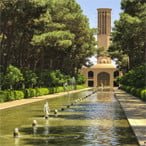
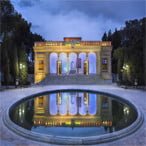
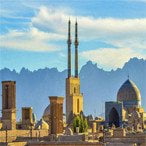

- Yazd City Tour 2 - Yazd Untouched
Less-observed places in Yazd
- Zoroastrian Tower of Silence
- Water Museum
- Old city district
- Alexander prison
- 12 imam mausoleum
- Lariha house
- Old Bazaar
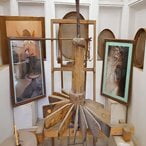
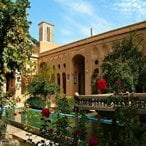
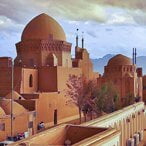
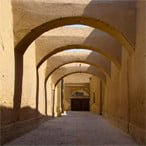
- Meybod, Kharanaq and Chack Chack (The holy temple of Zoroastrians) Tour
- Narain castle one of the oldest mud brick castle in Iran ( Meybod )
- Shah Abbasi Caravanserai ( Meybod )
- Ice-house ( Yakhchal )
- Pigeon House ( Pigeon Tower )
- Kharanaq Citadel and village
- Chak Chak ( Zoroastrian Shrine )
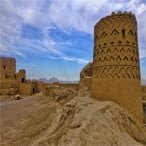
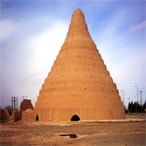
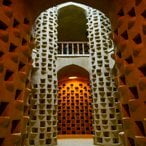
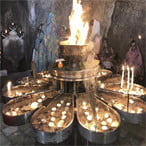
- Fahraj Desert
A full day in Fahraj desert close to one of the oldest villages in Yazd (40 min far from Yazd)
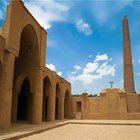



- Bafgh Desert
A full day tour in Bafq and its suburbs (1.5 hours far from Yazd)
- Jameh Mosque of Fahraj
- Sadegh Abad desert




Book Yazd City Tour
YOU MAY ALSO LIKE
Tripadvisor: Letsvisitpersia
WhatsApp :+989333020393
Telegram: Letsvisitpersia
